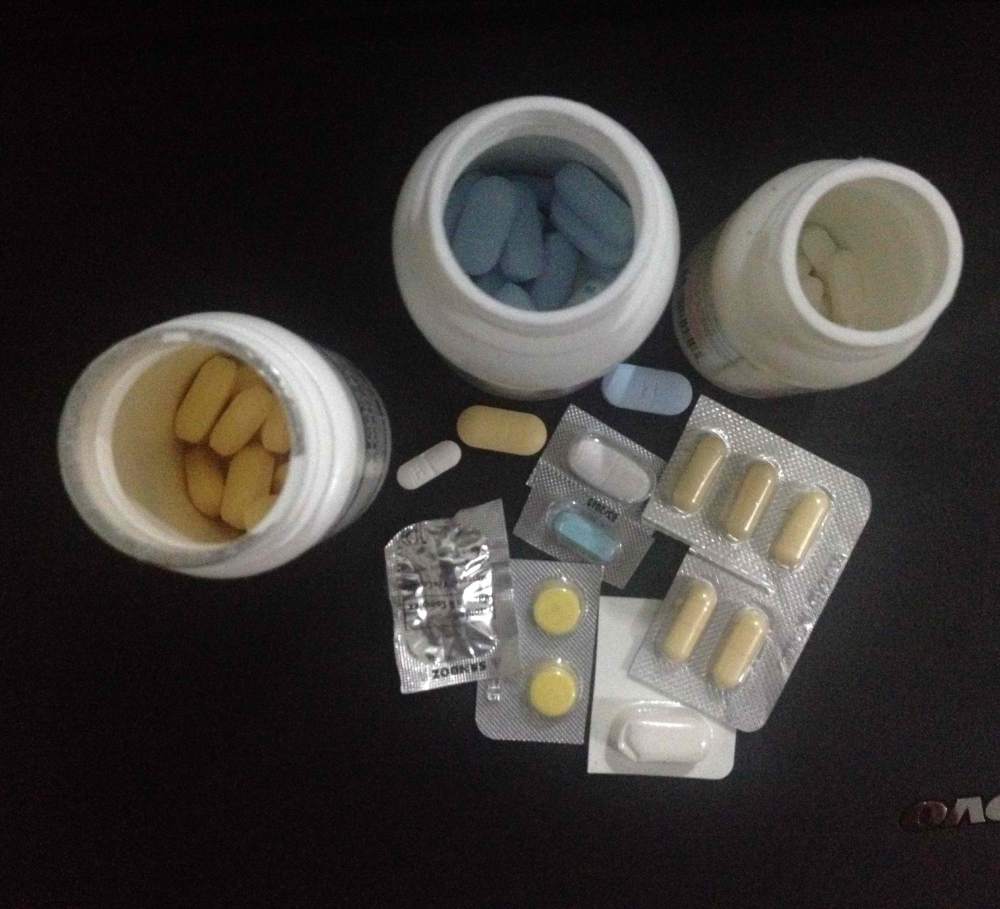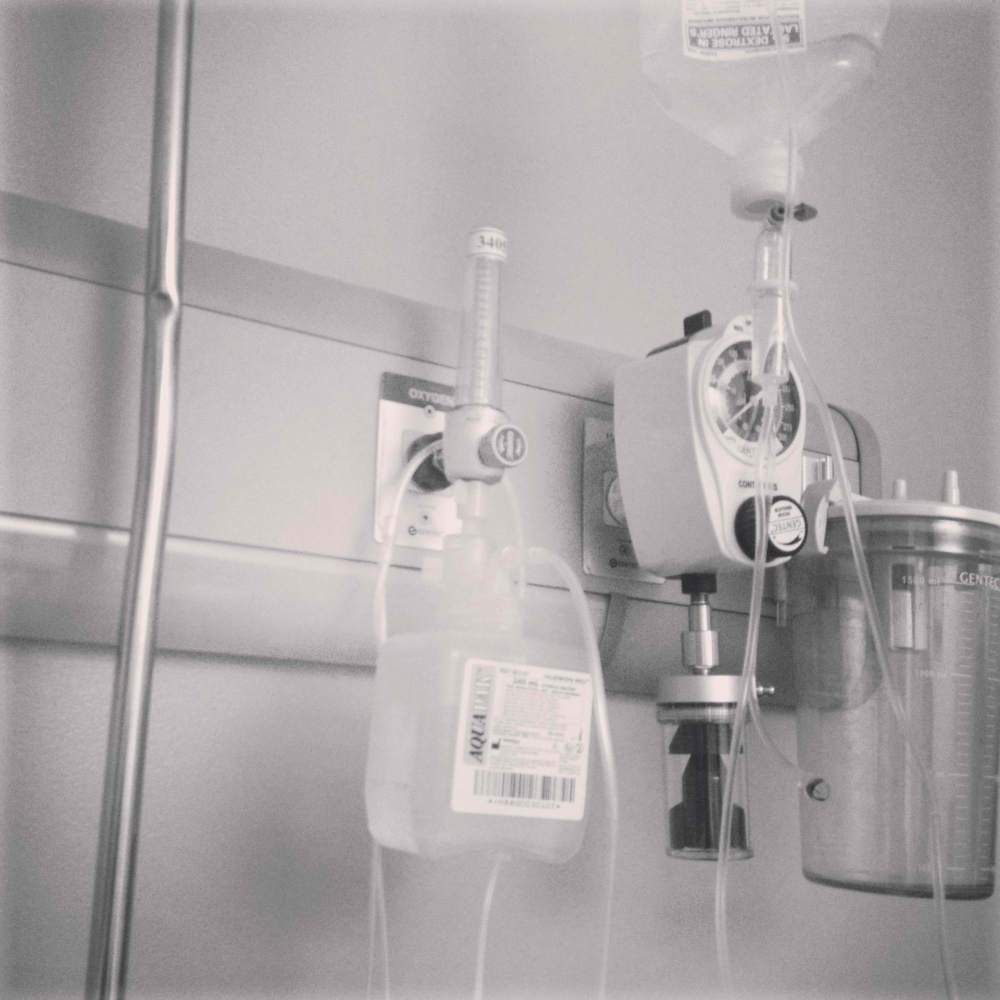
It happened August last year. Despite his difficulty in breathing, he had to go out of the house alone to go to the local medical clinic. After numerous tests, he received a diagnosis of pneumonia with prescriptions that would last him a week. He took them secretly and religiously but had chills and nights filled with pain and silent grimace.
On the seventh day, the medicines were not working and his family rushed him to the Lung Center of the Philippines.
He doesn’t like the feeling and idea of being in the hospital but he knew he needed it. After a new set of tests, the doctor advised immediate confinement. However, the hospital had no vacant room so he transferred to Capitol Medical Center. He was already crying when his parents were signing the confinement papers.
He kept imagining the hospital room would be the last thing he’ll see before he dies. He knew something was already wrong but he couldn’t quite put a finger on it. He had to undergo more laboratory tests. For three days, he had uncontrollable chills and had to be placed under a certain light bulb to be warm. He was like an egg — except that instead of being born, he felt like he was dying.
On his fourth day in the hospital, the doctor told him he had pneumocystis carinii pneumonia (PCP). He took new medicines but they were still not working. The doctor asked his loved ones that the family had to talk privately.
After that conversation, he had to undergo one last procedure: a blood test. During the seventh day, he heard the whisper of death. The kind of pneumonia that he has is associated with a certain condition.
This person who is a big part of my life, a friend I’ve known for years, had a diagnosis of Acquired Immunodeficiency Syndrome or AIDS.

A Silent Epidemic
AIDS is a condition where the immune system becomes weak to a point that it can no longer fight common infections that it normally can. HIV or Human Immunodeficiency Virus is a retrovirus that causes AIDS. Its presence in the body lowers the ability of a person to fight off diseases. It attacks and weakens the immune system.
According to Dr. Jonathan Fontilla, a consultant who works with the Department of Health and World Health Organization, there are two possible conditions before a person living with HIV receives a diagnosis of AIDS.
- CD4 cell count of 200 and below. These are white blood cells that define and measure the immunity of a person
- Presence of an opportunistic infection. These take advantage of the weakened system and infect the person. It can come in the form of certain cancers.
Transmission of HIV can happen through unprotected sexual intercourse (vaginal or anal) and oral sex with an infected person. It may also occur through transfusion of contaminated blood, sharing of syringes and needles with a person living with HIV (PLHIV) — especially for drug injections, tattoos or other skin-piercing tools. It may also be transmitted through pregnancy or breastfeeding (infected mother to child).
Transfer of the virus can occur in these body fluids: blood, semen, vaginal/cervical fluids and breast milk. However, no one can acquire the virus through kissing, casual contacts or handshakes, living, drinking or eating with an infected person, mosquitoes and bed bugs.
How quickly does a person infected with HIV develop AIDS? The length of time can vary widely between individuals. Left untreated, the majority of people infected with HIV will develop signs of HIV-related illness within 5-10 years. However, the time between an HIV infection and an AIDS diagnosis can be 10–15 years, sometimes longer.

Worse Days to Come
As he knew the truth, my friend felt engulfed in furious waves that won’t stop coming.
The diagnosis made him experience a full spectrum of emotions: anxiety, denial, fear, guilt, hopelessness, concerns about finances, accuracy of tests, and the reaction of family and loved ones. For days, he was stuck in bed. He can’t breathe with his lungs. He never ate his meals. He was afraid. He still wants to chase his dreams. But he felt as though the world stopped all of a sudden.
He stayed in the hospital for twelve days. But he lost count; it felt like eternity. We would go out of our way to visit him in the hospital. These were the few times we could still see him smile. But even when he was finally sent home to his family, he didn’t feel better at all.
Aside from pneumonia, he had tuberculosis and retinitis. Like knives poking his already fragile body, other diseases emerged out of nowhere. These were complications of AIDS. In figures, the doctor told him a normal person’s immune system is 500. His was -5. He wanted to give up on life. Sadly, he wasn’t the only one going through all of these.

On the Rise
Cases of HIV continue to rise in the Philippines. According to Dr. Eric Tayag, chief of the National Epidemiology Center of the Department of Health, there are 16 new cases of HIV everyday.
For the month of June 2014 alone, there were 494 new HIV cases. Last year, there were only 431 reported cases for the same time period. Out of the 494 cases, 42 people developed AIDS.
From January to June 2014, we now have 2,814 reported HIV cases.
The Philippine government only started an HIV/AIDS Registry to record statistics in 1984. From that time up to now, here are the total numbers:
- 19,330 HIV cases
- 9% developed AIDS (1,766 cases)
- 90% were male (17,367 cases)
- 93% of cases acquired the virus through sexual contact (17,975 cases)
- 46% of sexual transmission via homosexual contact (8,285 cases)
- 25% via heterosexual contact (4,460 cases)
- 29% via bisexual contact (347)

Lack of Treatment Hubs
There is no cure and vaccine for HIV. Anti-retrovirals (ARVs) may only slow down the replication of the virus. These drugs fight HIV by stopping or interfering with its reproduction inside the body.
As of June 2014, there were 6,935 People Living with HIV (PLHIV) presently on Anti-Retroviral Therapy. This number is not cumulative. It does not include those who died, those who left the country and those who decided not to continue with the therapy. These people are currently receiving medications from 18 treatment hubs in the Philippines:
- Ilocos Training and Regional Medical Center
- Cagayan Valley Medical Center
- Baguio General Hospital and Medical Center
- Jose B. Lingad Medical Center (San Fernando, Pampanga)
- James L. Gordon Memorial Medical Center (Subic Bay)
- Makati Medical Center
- Philippine General Hospital
- Research Institute for Tropical Medicine (Alabang)
- San Lazaro Hospital
- The Medical City
- Bicol Regional Training and Teaching Hospital
- Corazon Locsin Montelibano Memorial Regional Hospital (Negros Occidental)
- Western Visayas Medical Center
- Gov. Celestino Gallares Memorial Hospital (Bohol)
- Vicente Sotto Sr., Memorial Medical Center
- Zamboanga City Medical Center
- Southern Philippines Medical Center
- Northern Mindanao Medical Center
To help the larger hubs, there are already smaller treatment hubs in Manila Social Hygiene Clinic (SHC), Pasig SHC, Klinika Bernardo Quezon City, Marikina SHC and Cebu City SHC. But persons living with HIV are complaining that these treatment hubs are too few for their number. With their weak immune system, it is also very difficult for them to travel frequently for medicines.
My friend who lives in Quezon City actually has to go to RITM in Alabang to get free anti-retroviral drugs. He said he inquired to get medicines from nearer hubs like Philippine General Hospital and San Lazaro Hospital but they asked for fees.
Worse, they are given supplies that could only last from two weeks to one month. They would have to go back to these centers. My friend also experienced the severe side effects of his medicines: nausea, repetitive vomiting, lost of appetite. His mind was also going haywire.

Mandatory Testing
Last May 2014, the Department of Health said they are pushing for mandatory HIV testing for high-risk groups and target populations.
Certain groups immediately opposed it. The Network to Stop AIDS Philippines described mandatory HIV testing as illegal and ineffective. As it is, Filipinos already find it hard to reveal they have HIV. With mandatory testing, advocacy groups believe people will hide their condition even more because they fear further persecution.
Mandatory HIV testing will only heighten stigma and discrimination. My friend shared the following experience:
“Yung isa kong kaibigan, nalaman ng company niya na may HIV siya. Tinanggal siya sa trabaho. Paano naman siya natulungan sa ganoong paraan?” (I have a friend. After his company knew he has HIV, they removed him from work. How did the test help him?)
Instead, the State can only encourage voluntary testing for individuals with high risks of contracting HIV. Republic Act 8504 or the Philippine AIDS Prevention and Control Act of 1998 clearly states the following: “No compulsory HIV testing shall be allowed.” (Article III, Section 15).
As of now, DOH has no definite plans to implement mandatory testing. Yet they have started discussing the subject with some lawmakers.

Stopping the Stigma
“Oo, mahirap ‘yung sakit namin, pero mas mahirap na pinandidirihan ka ng publiko. Lalo na yung nagbabago ang trato sa’yo ng mga taong malapit sa’yo, mga mahal mo sa buhay”. (Yes, our condition is difficult. But what’s worse is the disgust of the public. Especially when your close friends and loved ones treat you differently.)
As of now, my friend is still unemployed. But he is trying to find an online job that will not ridicule or discriminate him — a job that will sustain his expenses for treatment. He still hasn’t admitted his condition to all his close friends, yet his family knows his situation. They will continue to support and stand by him through all the difficult moments.
But not all people infected with HIV/AIDS have people around them who love them unconditionally. My friend knows he is facing a death sentence with AIDS. He has no idea when his body will falter. Worse, most people have no idea about the pain they are going through, physically and emotionally. The lack of understanding about HIV and AIDS seems to be a greater epidemic than the actual condition.
Luckily, there is a cure for ignorance: empathy.

[Entry 41, The SubSelfie Blog]
About the Author:
Apple Gamboa was an interview and field producer for GMA News, particularly the newscasts Quick Response Team and News to Go. She is currently a producer for lifestyle TV shows and documentaries. Travelling and music is her passion and she takes risks as her personal reality medicine. Journalism 2010, UST. Read more of her articles here.


Someone close to my heart lost his battle with AIDS. He was confined in the hospital for one month and was diagnosed with TB and meningitis. When the doctor advised him to go home, I know it was not him getting better I know we were only waiting for his time to leave in this world. He was so young, full of dreams and hope.
LikeLike
We’re so sorry to hear what happened to your loved one. We can only believe that he or she is in a better place now. But sometimes it’s not how long we have stayed in this world, but how much we have touched other’s lives.
LikeLiked by 1 person
nice blog!
LikeLike
Hi Jessica! Wish I can personally comfort you right now. Don’t lose hope, your best friend could still get better. Praying for the both of you. Just be strong and always be there for your friend.
LikeLike
My eye won’t quit tearing up while reading this blog. I have a friend suffering from AIDS.
In my prayer that lord heal those people who is suffering from hiv aids,especially my bestfriend
LikeLike
Reblogged this 🙂 What do you know about the word AIDS?
LikeLike